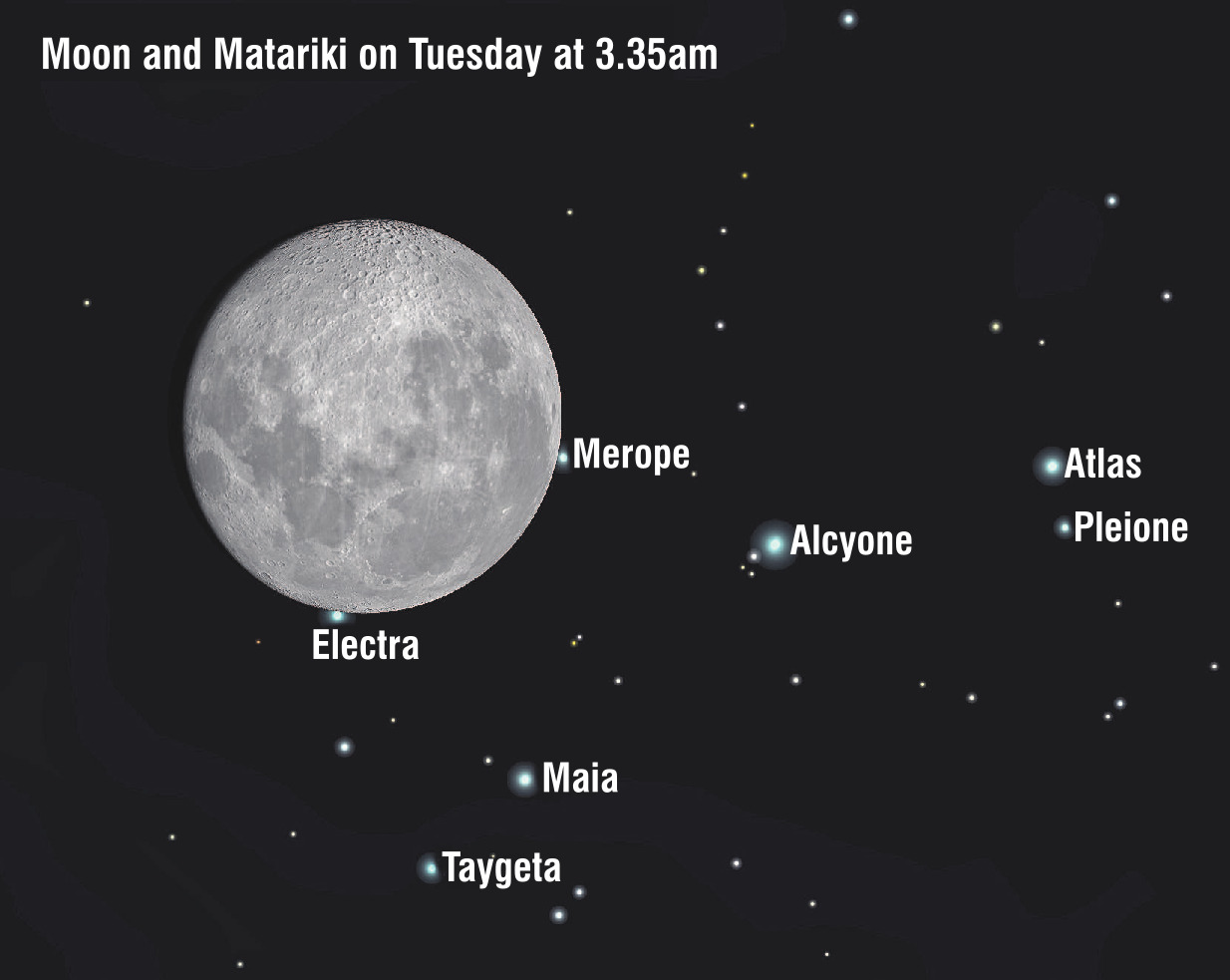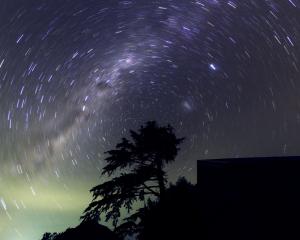

The moon’s glare reduces contrast, making it difficult to observe faint stars, galaxies, and other deep-sky objects. With this month’s full moon occurring at 9.24 tomorrow morning, I would generally avoid stargazing for the next few nights and catch up with some much-needed sleep.
However, weather permitting, and despite the moon being 96% illuminated, I plan to get up early on the morning of Halloween to experience something extraordinary. Beginning at about 3.30am, the moon will slowly pass directly in front of the Pleiades star cluster.
The Pleiades, often called the Seven Sisters, is a prominent open star cluster in the constellation of Taurus, the Bull. The cluster is 444 light years from Earth and comprises hundreds of hot, young stars. Typically, someone with good eyesight can see six or seven Pleiads on any clear night. Steeped in mythology and folklore, the Pleiades have fascinated stargazers worldwide for centuries; locally, Māori astronomers call it Matariki.
In the run-up to dawn, the moon will first cover and then uncover several of the cluster’s brighter stars in a series of events called lunar occultations. While the disappearances will be hard to see with the naked eye, anyone with binoculars can witness each star vanish instantly as the moon’s bright limb covers them. If you can access a telescope, you can see dozens of stars hidden by the moon!
The precise time that each star disappears depends on where you live. In Dunedin, the bright star Electra will pass very close to the moon’s northern limb at 3.33, and Merope will disappear at about 3.36am. Just under an hour later, at 4.22am Alcyone will vanish.
Patient observers who keep watching will be able to spot the reappearance of Merope from behind the dark lunar limb at 4.54am. Pleione and Atlas will disappear just after 5.15am with Alcyone re-appearing in twilight at 5.36am.
I’m really hoping for clear skies for what promises to be a very interesting start to Halloween!











